I’ve never walked Fourth Plain until now.
At 9:23 a.m. I toss my car keys in my backpack and head toward Fourth Plain Boulevard with Columbian photographer Alisha Jucevic. She has been on staff only a couple of months, so this is new to her too.
Enlarge

(Alisha Jucevic/The Columbian)
Our destination is Thurston Way, which is 3½ miles east. Stops along the way will add to our mileage and, ideally, our understanding of this diverse area, now on the crux of change.
Will its diverse and vulnerable residents and merchants see their lives improve? New apartments, burgeoning businesses, improved streets and sidewalks, colorful murals and revamped buildings are all beginning to change the look and feel of Fourth Plain, to make it more of a whole place.
Vancouver neighborhoods by 2016 crime rate
(the bolded neighborhoods border Fourth Plain)
crime rate per 1,000 people
- Esther Short 233.7
- Shumway 170.7
- Meadow Homes 169.5
- Hudson’s Bay 146.7
- Central Park 143.8
- Marrion 140.7
- Columbia Way 136.4
- VanMall 134.5
- Fircrest 113.9
- Arnada 108.1
- Ogden 98.1
- Rose Village 93.2
- Harney Heights 91.8
- Kevanna Park 90.6
- Bennington 88.6
- North Garrison Heights 87
- Lincoln 86
- Northcrest 85.6
- Evergreen Highlands 85.2
- Bagley Downs 82.1
Source: Vancouver Police Department
A district, as Rebecca Kennedy put it. Kennedy is the city’s long-range planning manager. She talked with me about the vision of making Fourth Plain a better place to live, work and visit without displacing the people who call it home.
“There are ways to direct that change so it benefits the people who live there now,” she said. “It is very hard to do well. Lots of communities struggle with that.”
Walking down the hill from Clark College, we spot Parc Central across the street. The complex may be better known by its old name, Courtyard Village Apartments, a place people lived in because they couldn’t afford someplace better. When a Beaverton, Ore., developer bought the complex in 2014 and announced a renovation, the tenants were told that rents would go way up. Some of the lowest-income, most-vulnerable renters were faced with homelessness. While this spurred the city to legislate tenant protections, today there’s still a tight rental market countywide, and people can get priced out.
A smaller complex next to Parc Central, Waterworks Park Apartments, sold earlier this year for $3.3 million. It’s been repainted and renamed T Street Apartments. A 494-square-foot one-bedroom unit is advertised online for $900 per month.
I know we’ll pass a lot of apartments on our walk. Most residents along the Fourth Plain corridor are renters, subject to an ebbing and flowing housing market. They tend to be poor. The area’s poverty rate is 36 percent, compared with 15 percent citywide.
I keep this in mind as we walk east, but it’s hard to pay attention over the constant cacophony of cars.
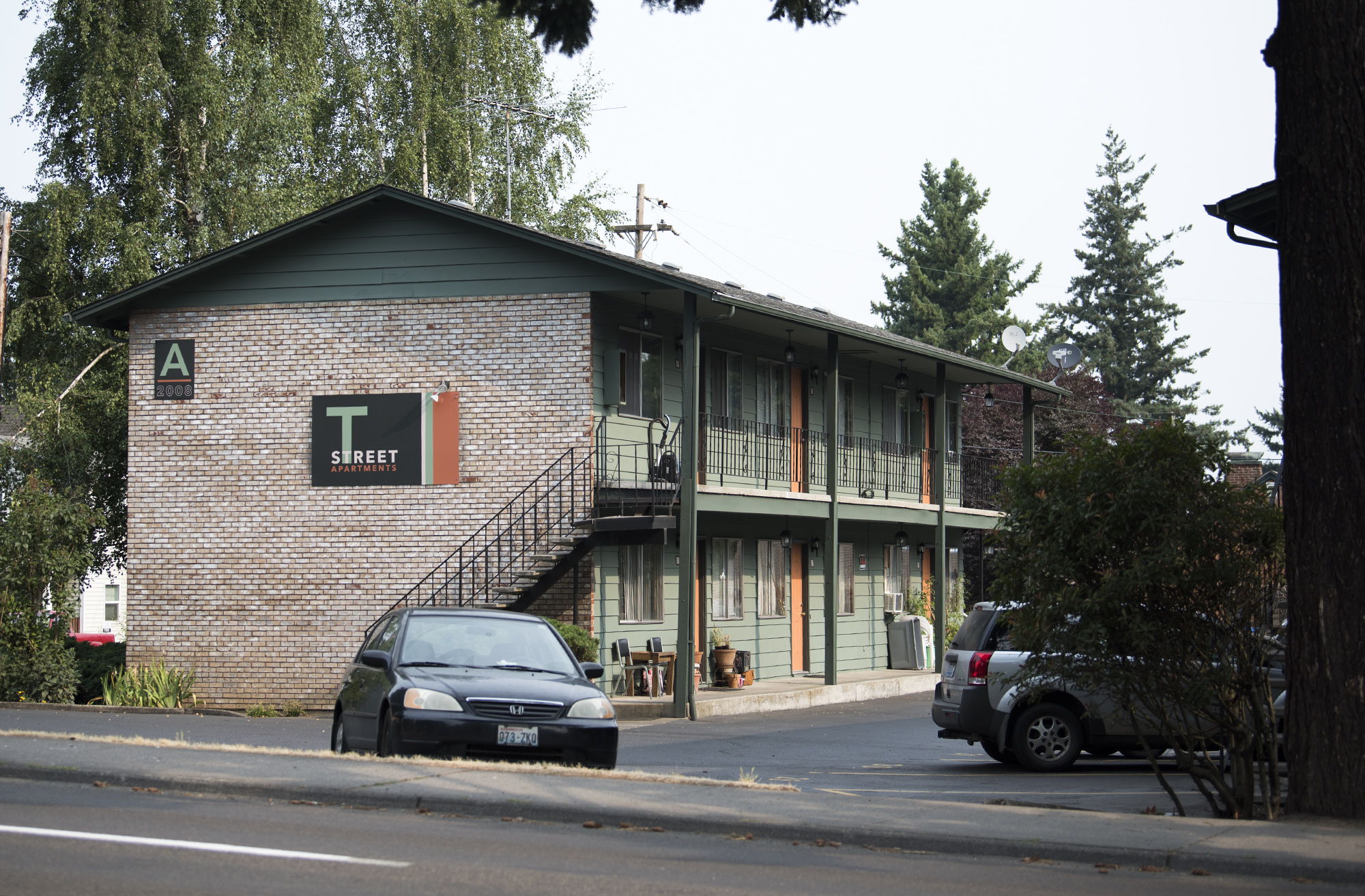
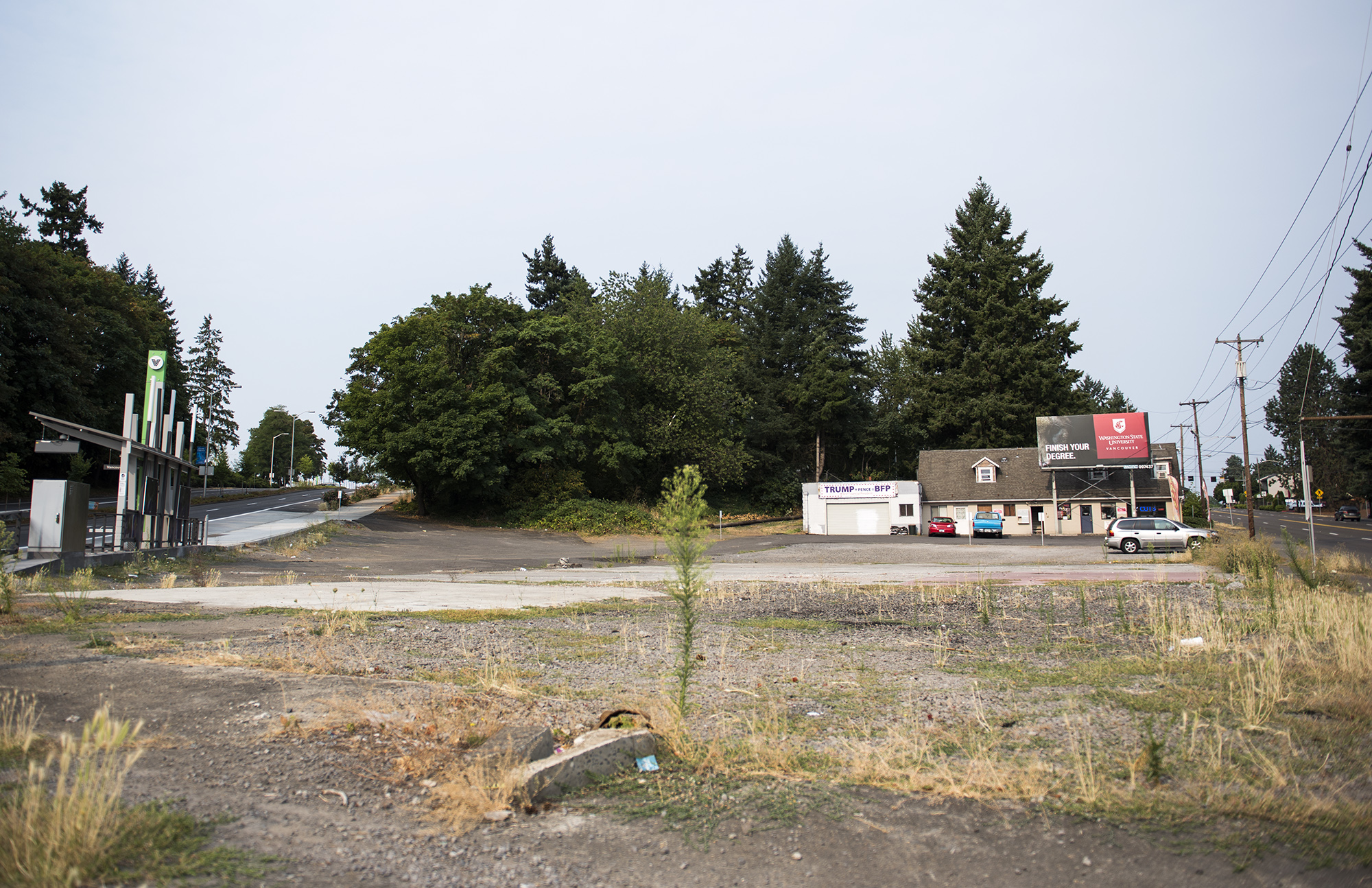

Gravel and weeds
At the intersection of Fort Vancouver Way and Fourth Plain, there’s an empty lot owned by the Clark College Foundation envisioned as the college’s formal north entrance, with a plaza celebrating international students and Fourth Plain, which is known as Vancouver’s international business district.
We see gravel and weeds pushing through pavement. Everything looks cracked and worn, aside from a new station for The Vine, the bus rapid transit system that loops along Fourth Plain, connecting downtown to Vancouver Mall. Transit connectivity is part of the plan for Fourth Plain.
At 9:32 a.m., we walk through crunchy golden grass at Waterworks Park. It’s a bit of a misnomer because it’s actually a utility property, not a park, where the city is working through the first of five upgrades. Swift Skate Park is the main draw.
Enlarge

(Alisha Jucevic/The Columbian)
Ethan Surry, 8, dips into a bowl, skating over the spray-painted face of Beavis from the ’90s cartoon sitcom “Beavis and Butt-Head.” It’s his last day visiting from Parksville, B.C. This skate park is twice the size of the one back home, he says. His grandpa, Bill Beville, teaches at Sifton Elementary School and has lived here 20 years.
“Sometimes you worry that local skaters aren’t going to be patient with a little kid,” Beville said.
So he was pleasantly surprised by people he’s met at the park with Ethan. One of the skaters helped him sweep up some broken glass. Downtown Vancouver has vastly improved and Beville thinks maybe the same thing could happen to Fourth Plain.
At 9:47 a.m. we wish Ethan a safe trip home and head back to Fourth Plain. Using a flashing crosswalk beacon that signals traffic to stop for pedestrians (these were installed a few years ago) we cross the street to Anderson Glass. Since 1950 the business has sold most anything having to do with glass: shower doors, auto glass, mirrors and frames.
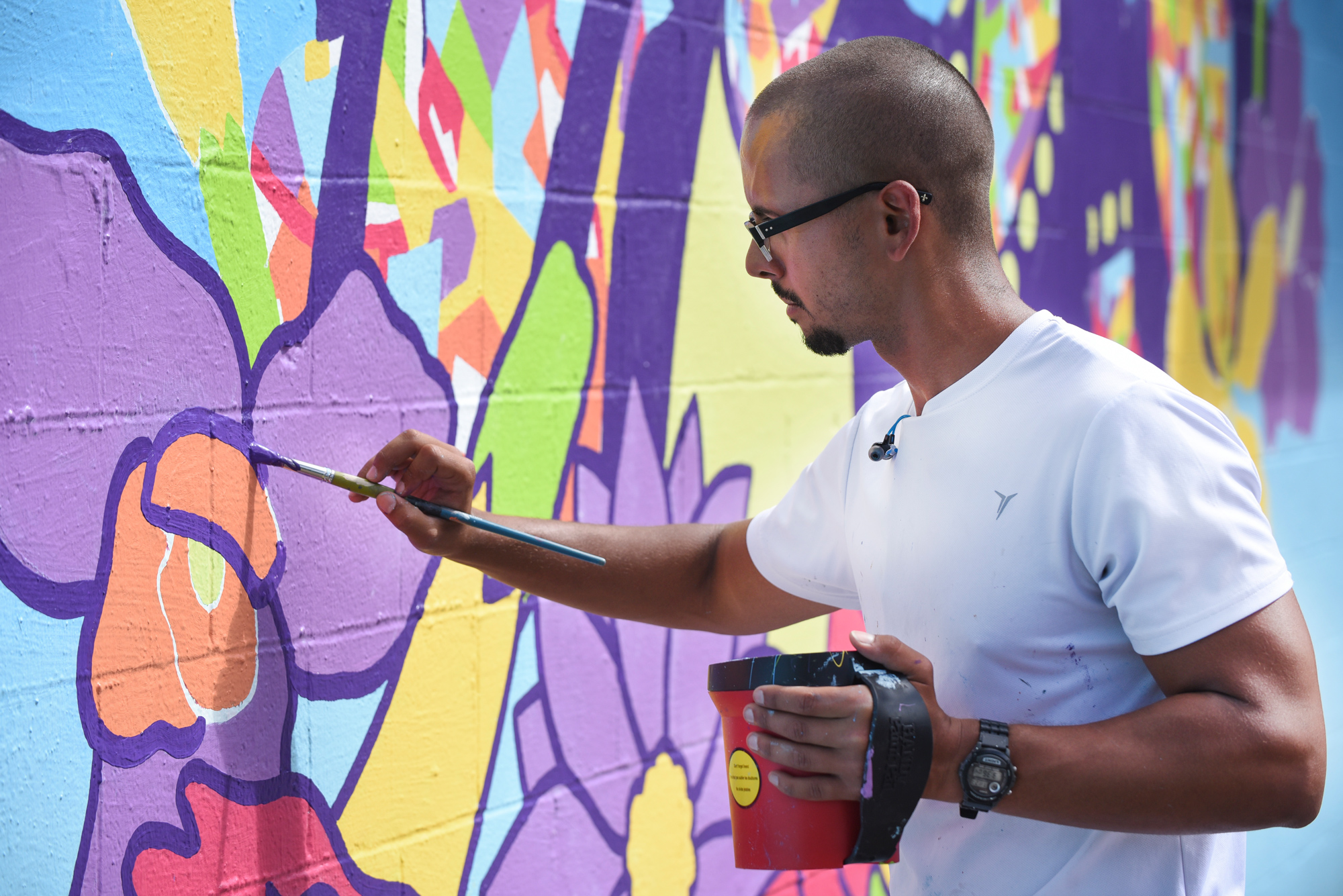
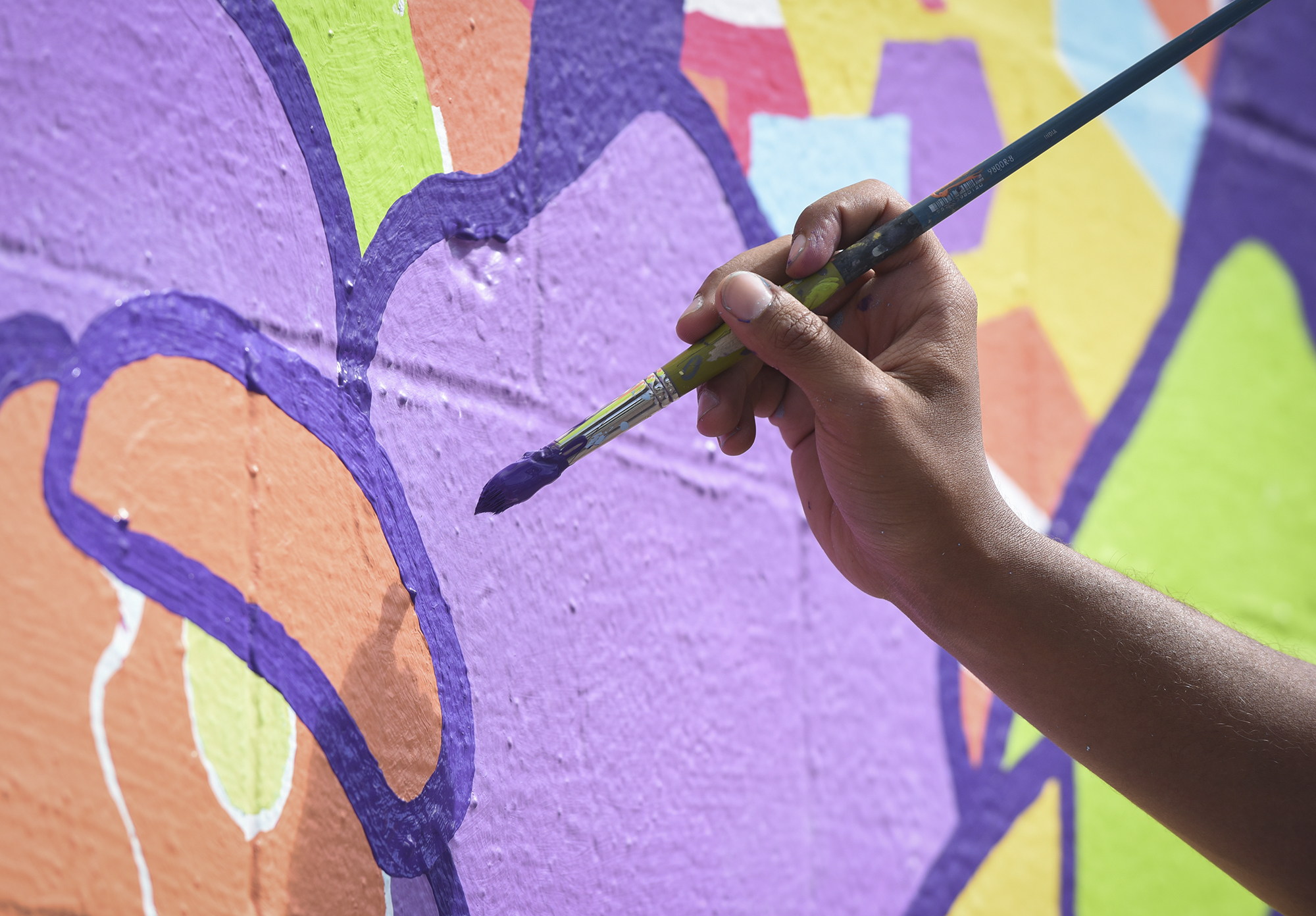
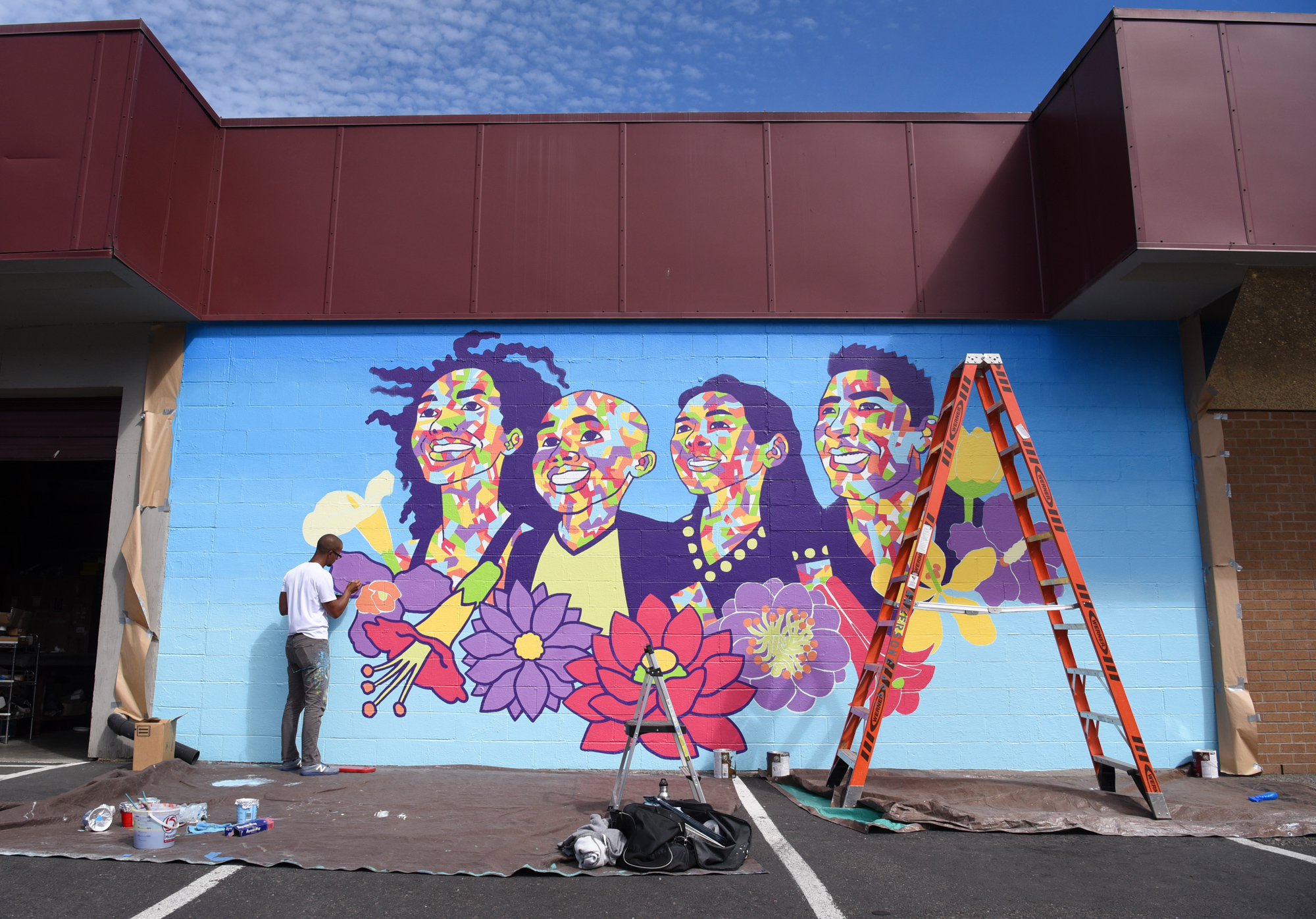
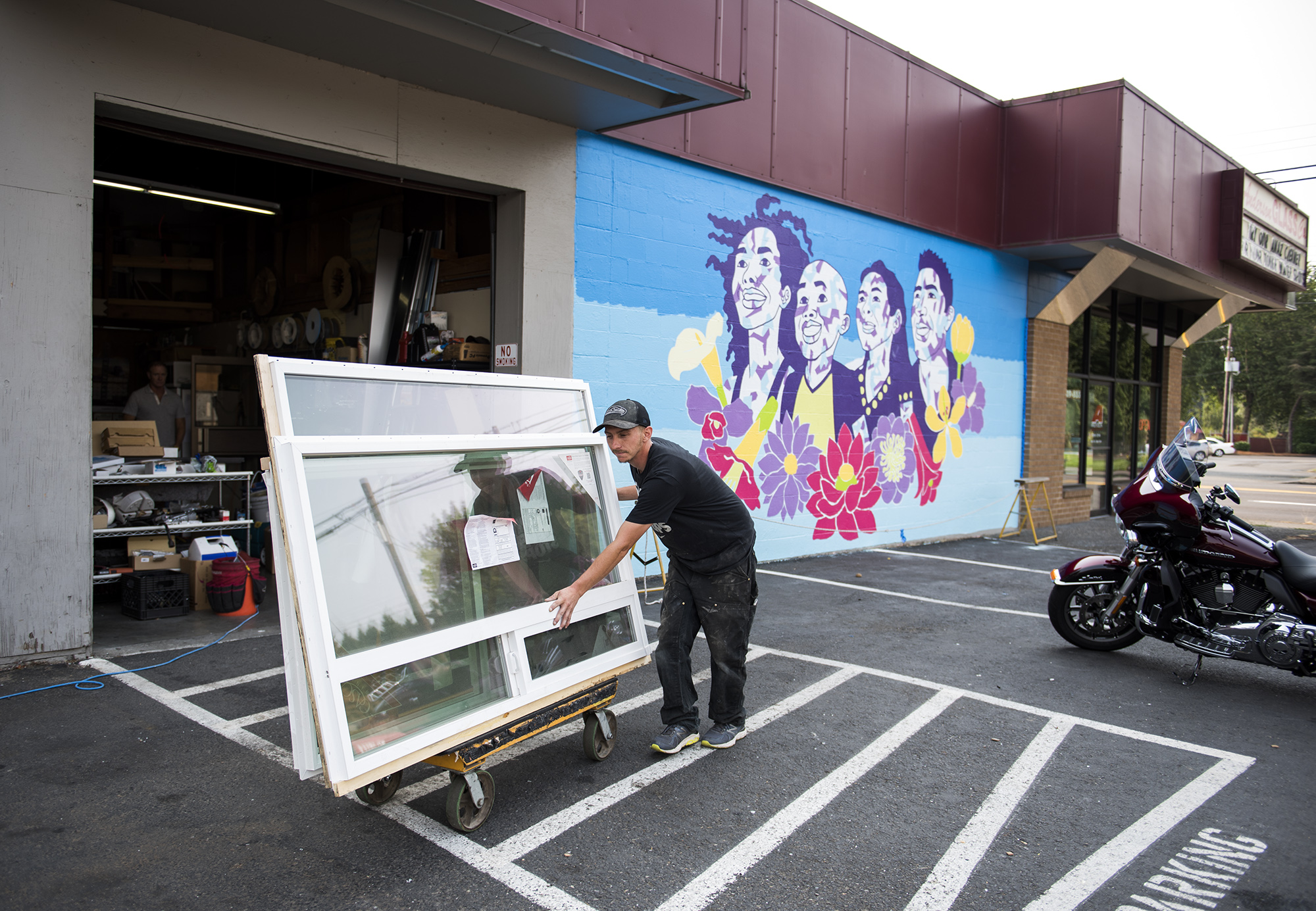
Owner Bill Steiner is part of the Fourth Plain Forward Business Association, a newly formed nonprofit of small business owners who shepherd projects aimed at improving the corridor. It’s Fourth Plain’s version of Vancouver’s Downtown Association or Uptown Village Association.
“This area seemed to be lost for a long time,” Steiner says, adding that it was ignored by the city for a long time, too.
Next month, Steiner will host a party in the parking lot to celebrate the completion of four new murals celebrating the international identity of Fourth Plain, including one on the side of his building and another next door at Evergreen Floors and Doors. The collaboration with the Clark County Mural Society is part of the bigger picture of building up the area and making people proud to live and work where they do, he says.
Flippin’ Fabulous
It’s just past 10 a.m., so Fabulous Flippin’ Treasures is open for business. As we walk in, we’re greeted by Stryker, a black labradoodle named after John Wayne’s character in “Sands of Iwo Jima.”
Like the classic movie, Stacie Marshall’s store is a step back in time. There are vintage items throughout the 6,000-square-foot space, though some vendors sell reproductions. She relocated her store from Orchards for more floor space and parking.
“The more people who know it’s here, the busier it gets,” says Marshall, who’s been on Fourth Plain for a year.
She’s had issues with people camping on the sidewalk, and the locked covers on her outside power outlets have been torn off so that people can charge their electronics. But, she knows those sort of problems happen everywhere.
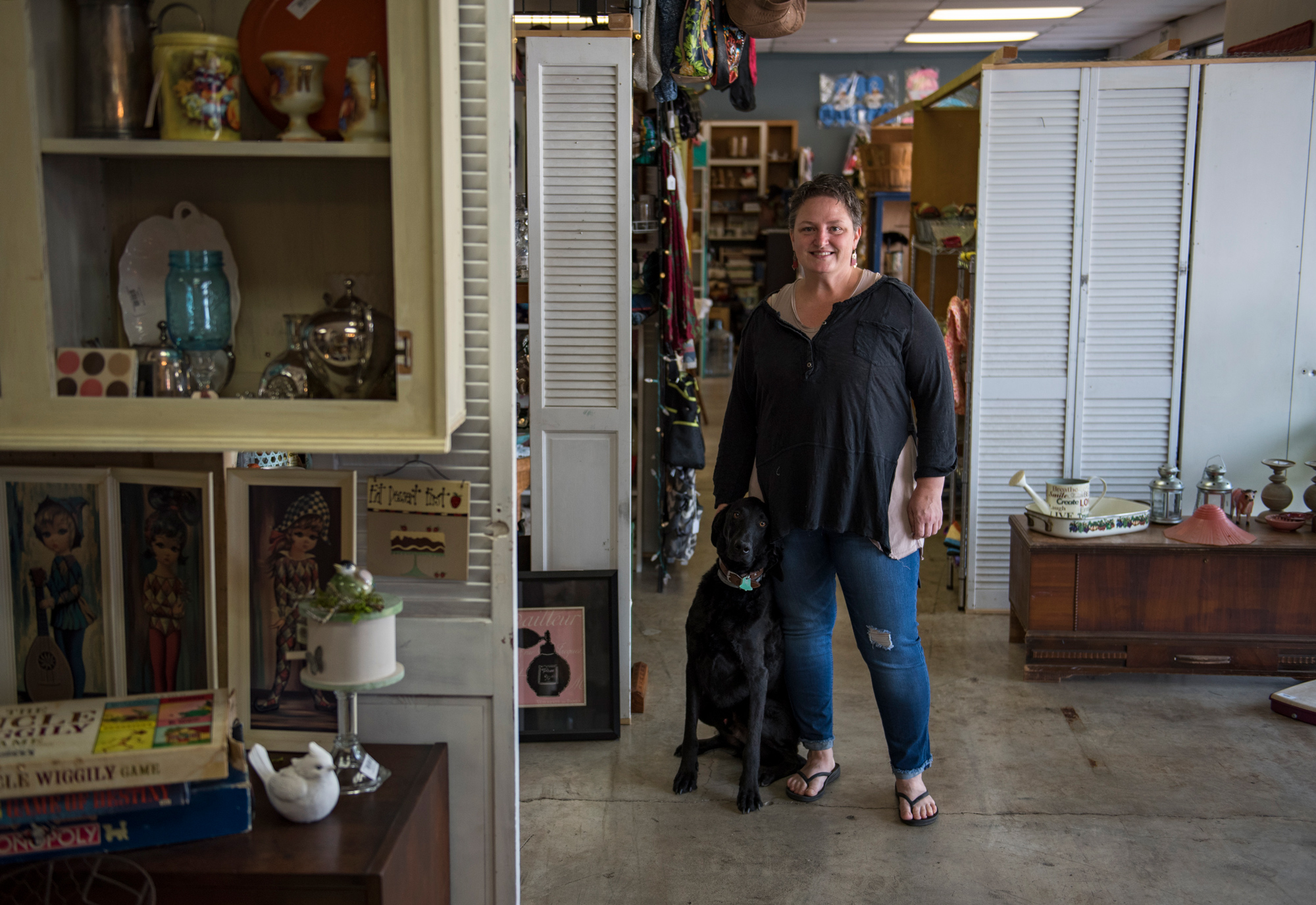
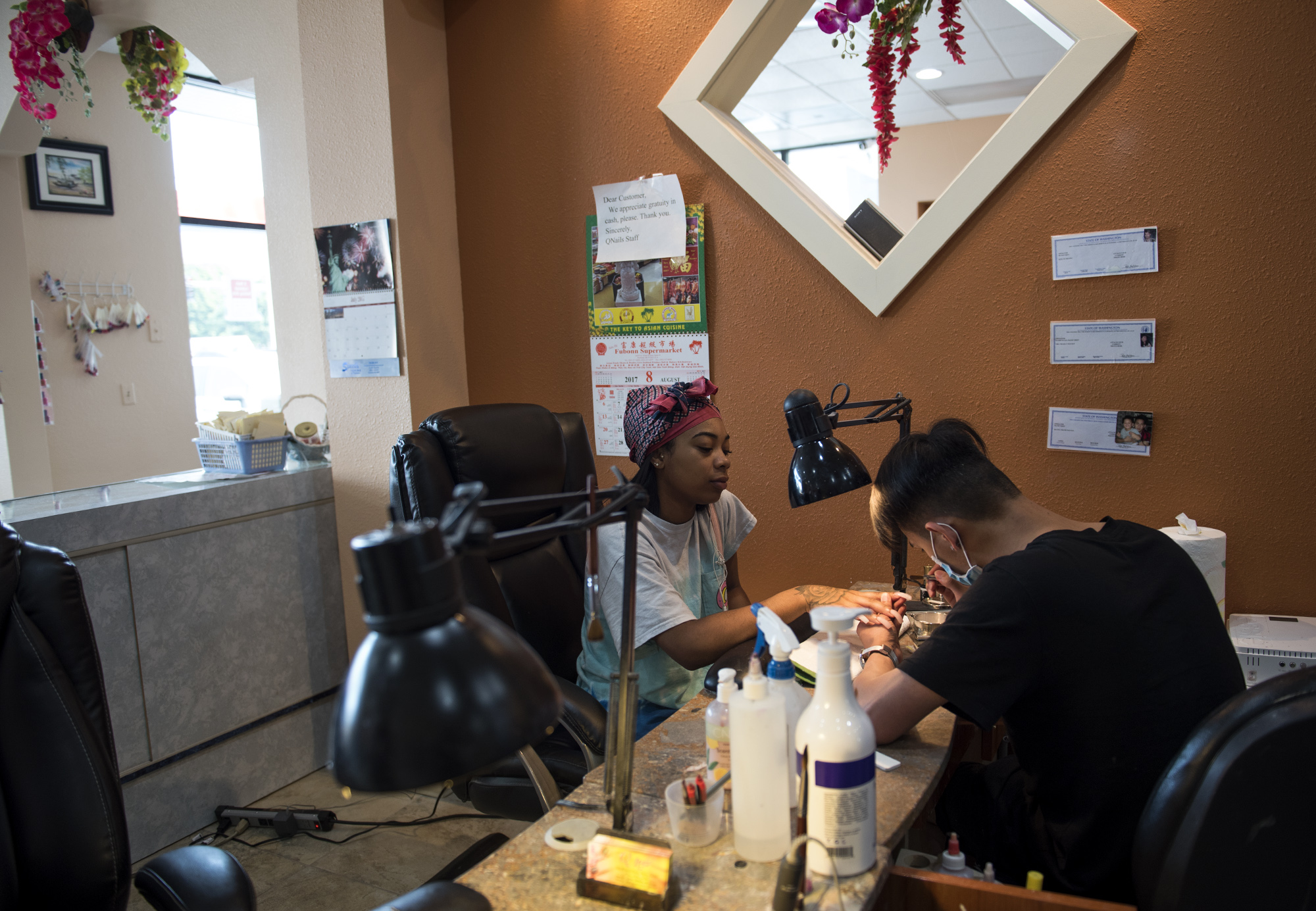
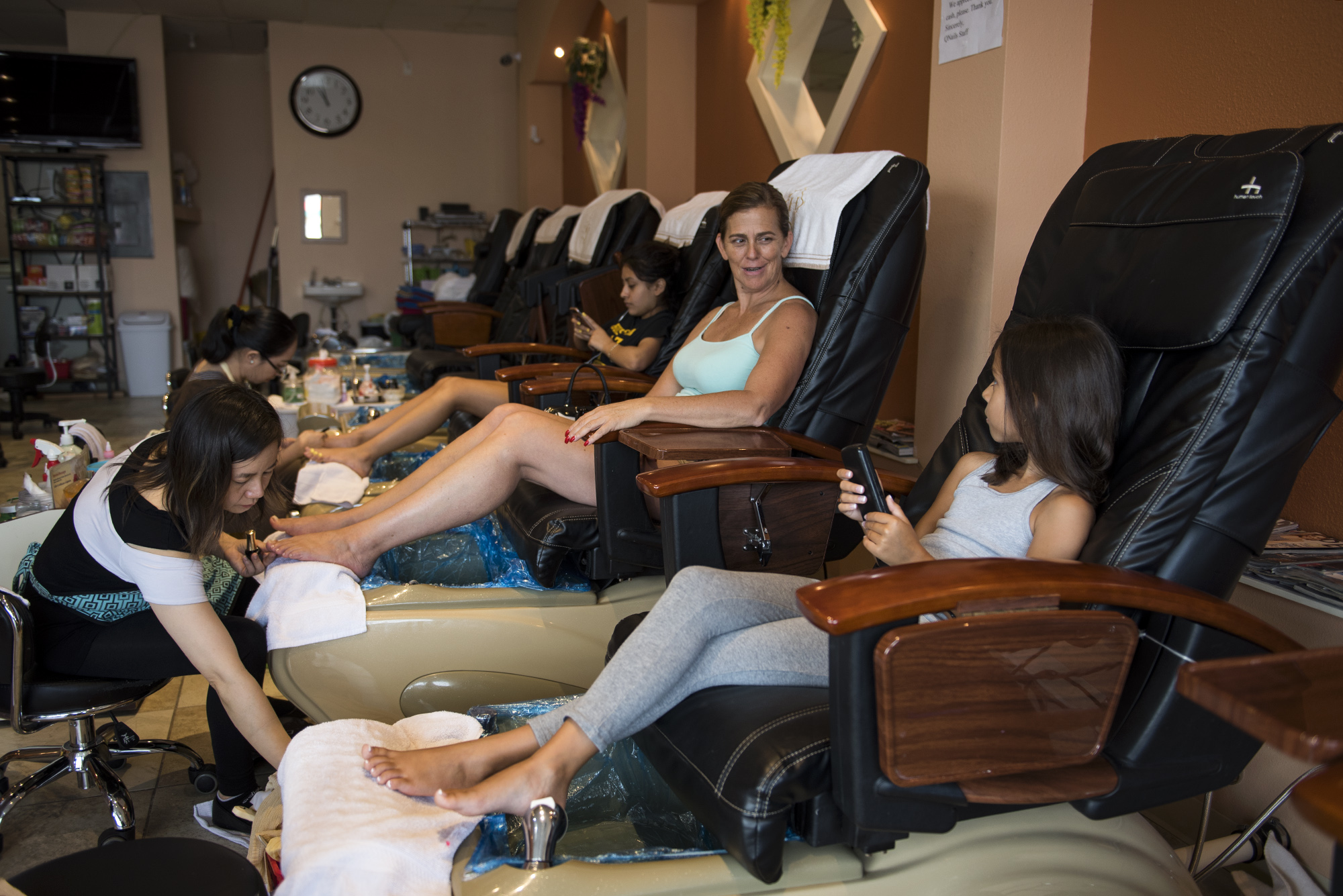

People sometimes come into the store to thank her for bettering the neighborhood.
“That just makes all those hours worth it,” Marshall says.
Brooklyn Hall gets her nails done at Q Nails every two weeks. She’s a lifelong Vancouver resident and graduated from Fort Vancouver High School, but she’s moving to Dallas soon. The 20-year-old works at the Burgerville on the corner of Fort Vancouver Way and lives nearby. Most of the businesses along Fourth Plain primarily serve people who live and work here, like Hall.
Sherrie Medina, who was getting a pedicure with her daughter, has been coming here 20 years. The corridor is an incubator for small businesses like Q Nails. One-third are minority owned.
“It’s nice how Vancouver is growing,” Medina says.
At Grand Boulevard I vividly remember when Fred Meyer left. The store just sat there, vacant, for nearly five years. Now there’s a Wal-Mart Neighborhood Market open 24 hours a day. Beville, from the skate park, said when Wal-Mart opened the area experienced a resurgence.
At 11:08 a.m. we poke our heads over the chain-link fence lining Warrior Field and watch workers building the new Vancouver Fire Station 2. The handsome brick building, slated to be operational by the end of December, is being relocated because fires and medical emergencies are most concentrated in this part of the city.
I can hear the faint sound of hammering. At the corner of the ballfield where we’re standing, there’s a colorful painted sign that shows hands around a globe made up of many countries’ flags. This is the sign of Fourth Plain Forward, the city’s initiative to improve a portion of Fourth Plain by strengthening small businesses and making the corridor safer and more attractive.
Lunch break
At 11:14 a.m., we settle into a window seat at Thai Little Home and deeply inhale the sweet smell of deep-fried potstickers from the next table. I order tofu cashew nut, a mildly spicy dish with bright, crisp veggies. Alisha gets the pad khee-mao with tofu. The restaurant fills. People have clearly discovered this spot.
Much of the philosophy behind Fourth Plain Forward is to draw outsiders like us — people who don’t live in the area — to boost business.
Through the window I see a sign for Dulce Tentacion Bakery on the side of a bright orange building.
“Let’s go there,” I say.
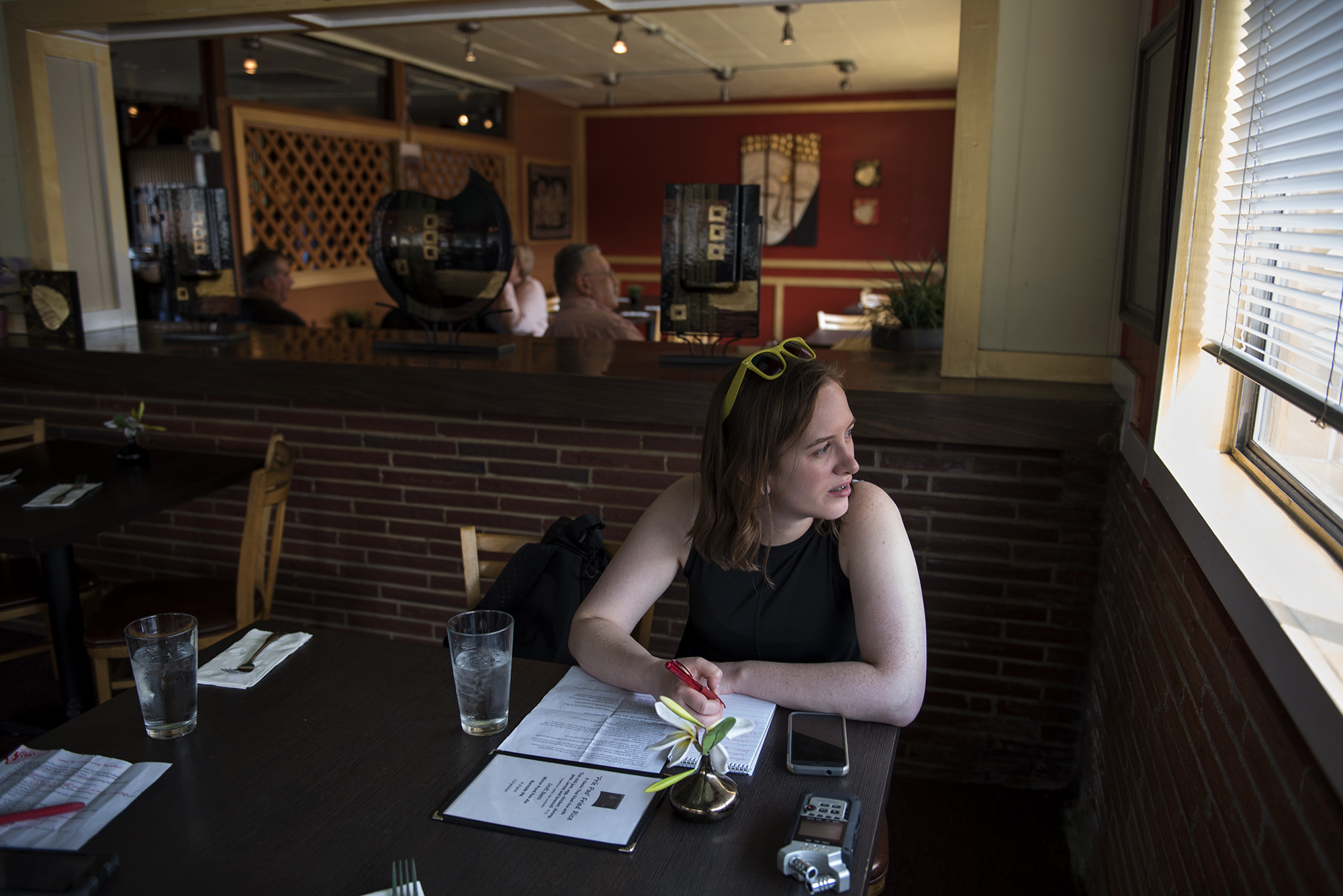
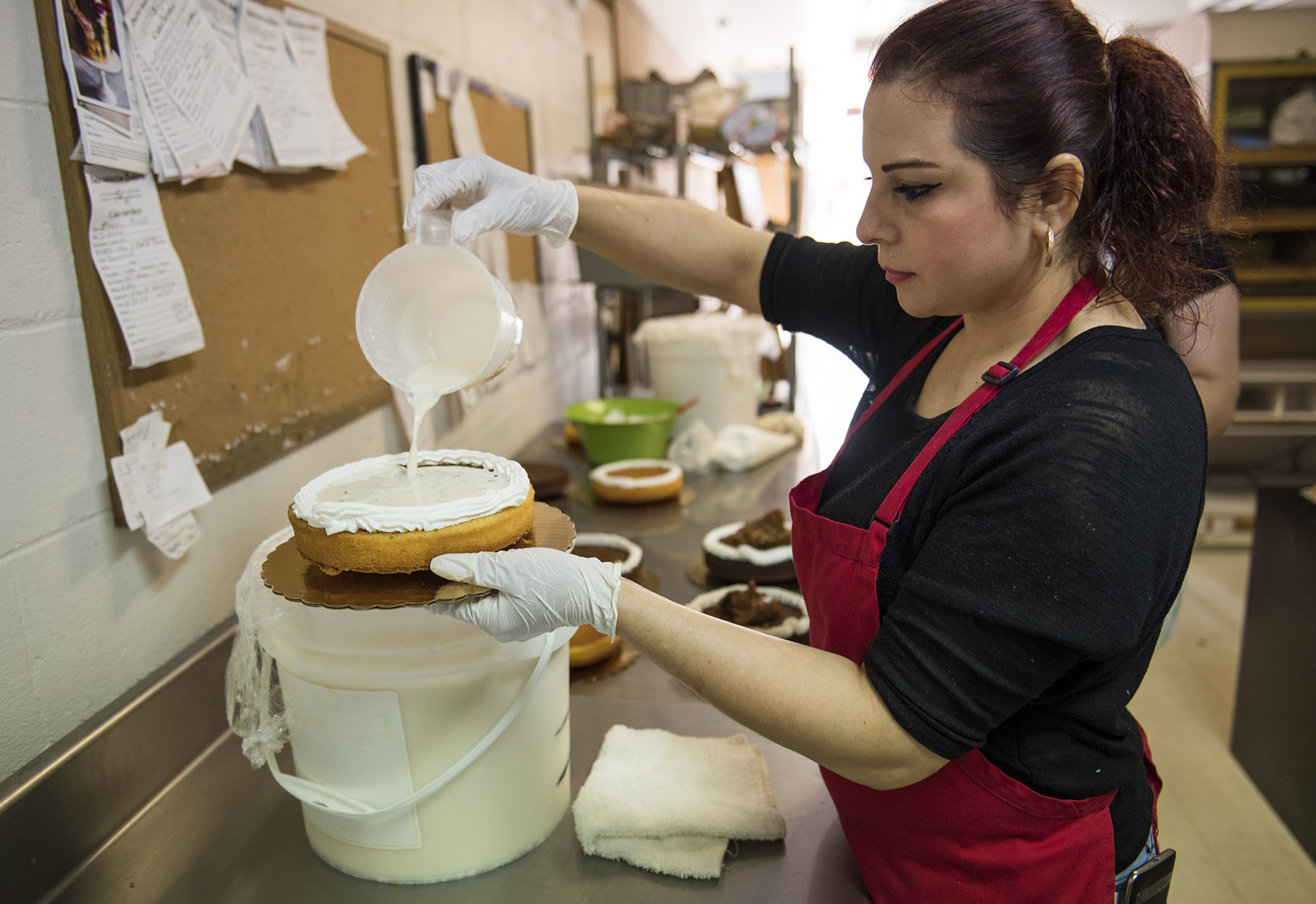
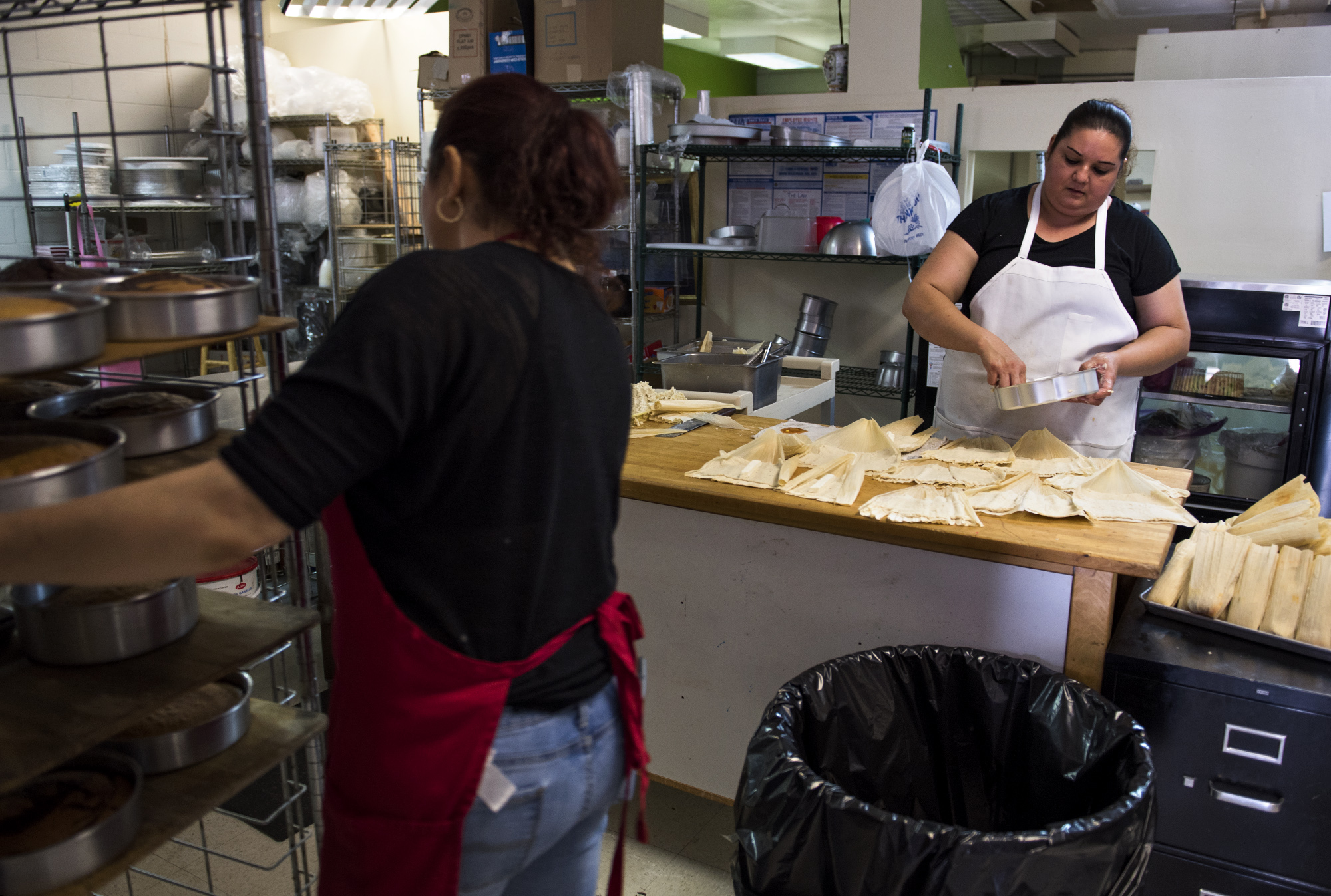
Piñatas hang from the ceiling of the panadería and pastelería and I can’t help but reach up and run my fingers through the paper tassels. Fernando Larios leads us to the back, where his aunt is making masa for 200 vegetable tamales, and he hands me a piece of fresco cheese that will go inside. It’s salty and dissolves in my mouth.
His dad and the store’s owner, Salvador Larios, says his business used to be located in Woodburn, Ore., where rent is cheaper. But there are more customers here. Hispanics are relocating to Washington, he says, because you don’t have to be a citizen to get state identification or a driver’s license. About one-quarter of Fourth Plain’s residents are Hispanic.
With pride, Larios describes the pork rinds, carnitas, chicharrón, flan and pan de elote that they make from scratch — “from the heart,” he says. He talks about his beautiful wife and flips through photos of elaborate cakes she’s made.
As he talks, Norma Heredia works swiftly, moistening a wedding cake with milk before layering each of the 15 tiers with cream.
When I ask Larios about being located on Fourth Plain, he says it too is beautiful. I’ve never heard Fourth Plain described this way.
“We don’t have any problems,” he says.
A walk in the park
Unlike Water Works Park, the grass at Evergreen Park is green and soft. When the park hosted an outdoor movie earlier this month, about 700 people showed up to watch “Sing,” an animated film about a koala named Buster Moon who’s desperately trying to save his struggling theater. The story echoes that of Evergreen Park.
As we approach the park at 12:40 p.m. there are some guys playing basketball, and 34 kids with the city’s Summer Playgrounds Program running around. It didn’t used to be this placid. The park earned a reputation as a crime hub and gathering spot for gang members. Six of the 20 neighborhoods with the highest crime rates in Vancouver border Fourth Plain.
Shelly Vincent, the playgrounds program site leader, has worked in the park for 10 years.
“It’s safer when we’re here,” she says. Still, she has to remind kids not to stay at the park by themselves when the program ends in the afternoon.
Enlarge

(Alisha Jucevic/The Columbian)
Participants are 6 to 11 years old, but a number of older kids who used to be participants now volunteer. If they volunteer and eventually become staff members, that means they’re staying out of trouble, she says.
Fernando Serrano, 14, volunteers with the program. A whistle blows as some staffers try to organize a soccer game.
“Mostly all summer I didn’t have anything to do. So, being here, being active is better than doing nothing at home,” he says. He has met friends through the program and the park is practically his backyard.
“It gives us activities to do in the summer when you think there’s nothing to do outside your own house except to, you know, eat Popsicles and be lazy,” says 10-year-old Lilly McQuiddy, while swinging with Regan Jones, 9.
At 1:02 p.m., I duck to avoid an errant soccer ball. We walk on.
Maava Fuatgavi Jr. specializes in Polynesian tribal style tattoos with bold black lines, hence the name: Polynesian Ink Tattoo Studio. Three flags on the wall behind him represent American Samoa, Western Samoa and Tonga.
Fuatgavi is Samoan and hails from Kailua, Hawaii, where he met his wife, Lyn, co-owner of the business. Soothing Hawaiian tunes by Moke Boy are playing, meant to calm customers paying to be stabbed with needles. Just outside their business, on Neals Lane, the city is expanding the sidewalk and installing streetlights so people can safely walk to Fourth Plain. I ask Fuatgavi whether he’s worried about rent going up as a result of the improvements.
Enlarge

(Alisha Jucevic/The Columbian)
“It is what it is,” he says, wiping down a customer’s fresh tattoo.
Landlords have to do what they have to do to get by, he says, and he’s got to pay rent to keep this place open and build clientele.
Lyn, though, is somewhat anxious about the sidewalk work getting finished and the awkwardly oriented parking lot.
“I keep telling her ‘just be patient,’ ” Fuatgavi says. His calm, no-worries Islander vibe seems fitting for a tattoo artist. “It’s that laid-back attitude. It makes us who we are.”
It’s 1:30 p.m. and we’re entering a less colorful stretch of Fourth Plain. We pass old apartments and ivy-covered fences. The top of my head is hot from the sun, now directly overhead. A glance at the freckles on my shoulder confirms that my sunscreen is wearing off.
We pass Burnt Bridge Creek Trail where Steiner, the owner of Anderson Glass, hopes a Fourth Plain multicultural festival will someday be held.
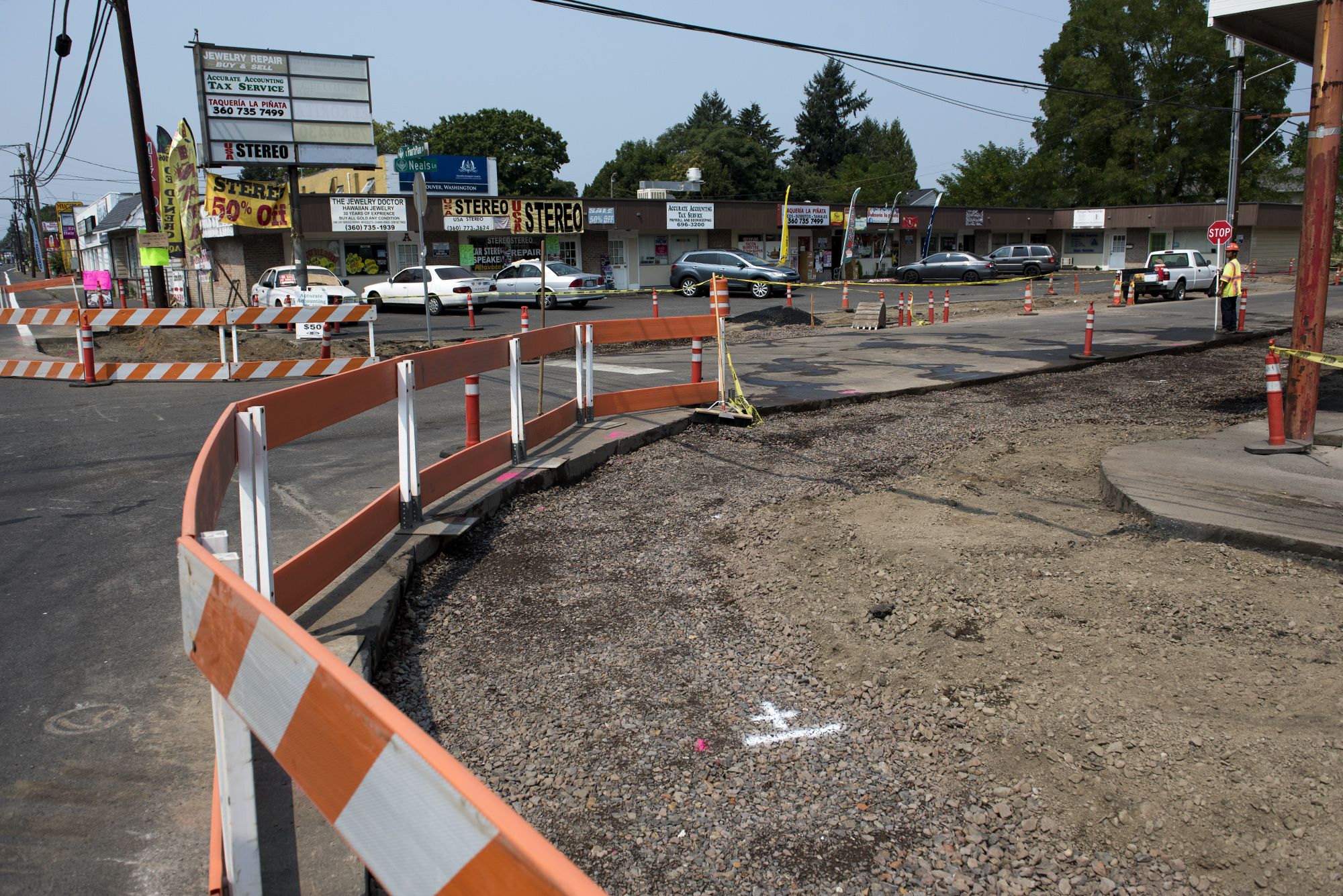
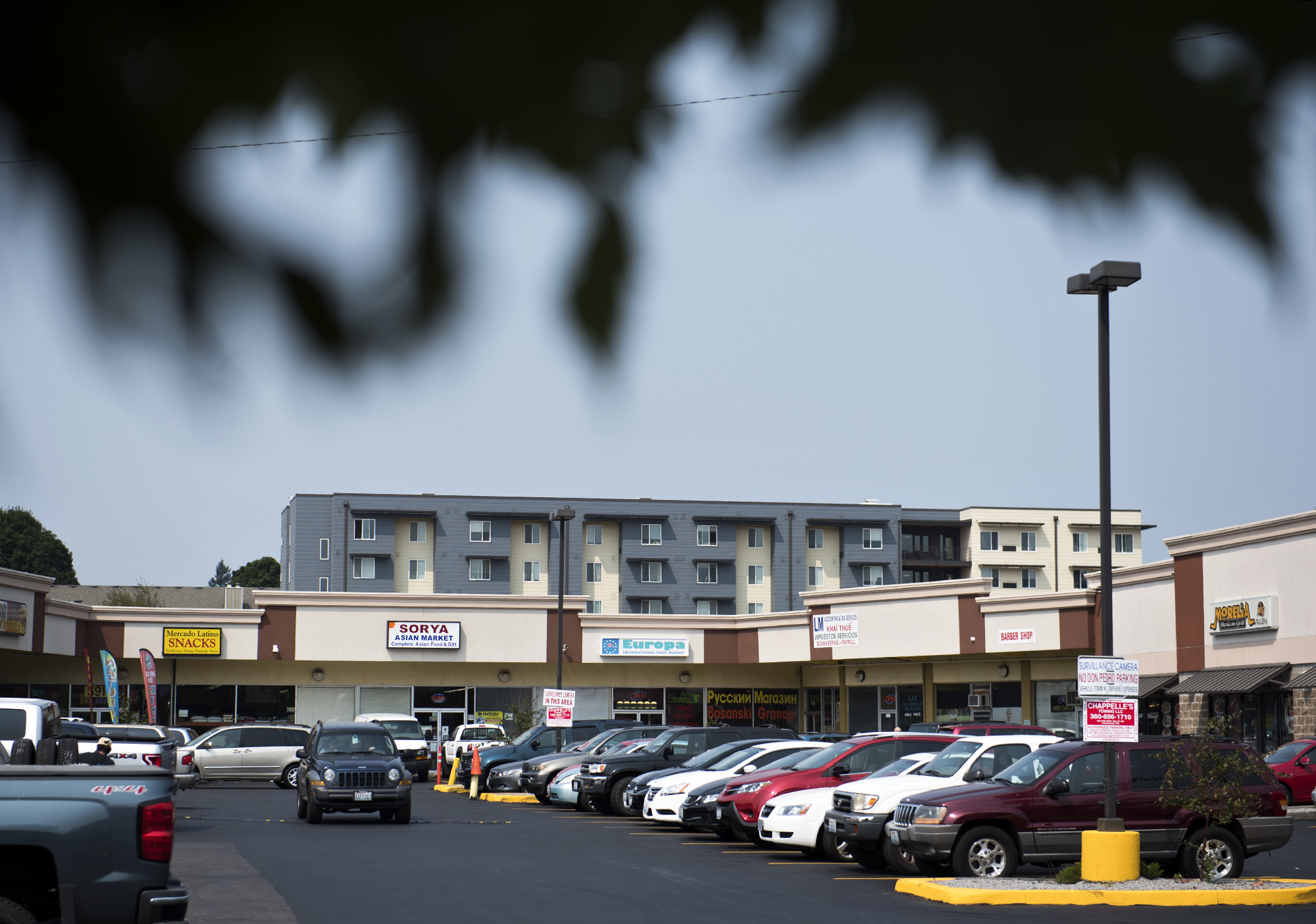
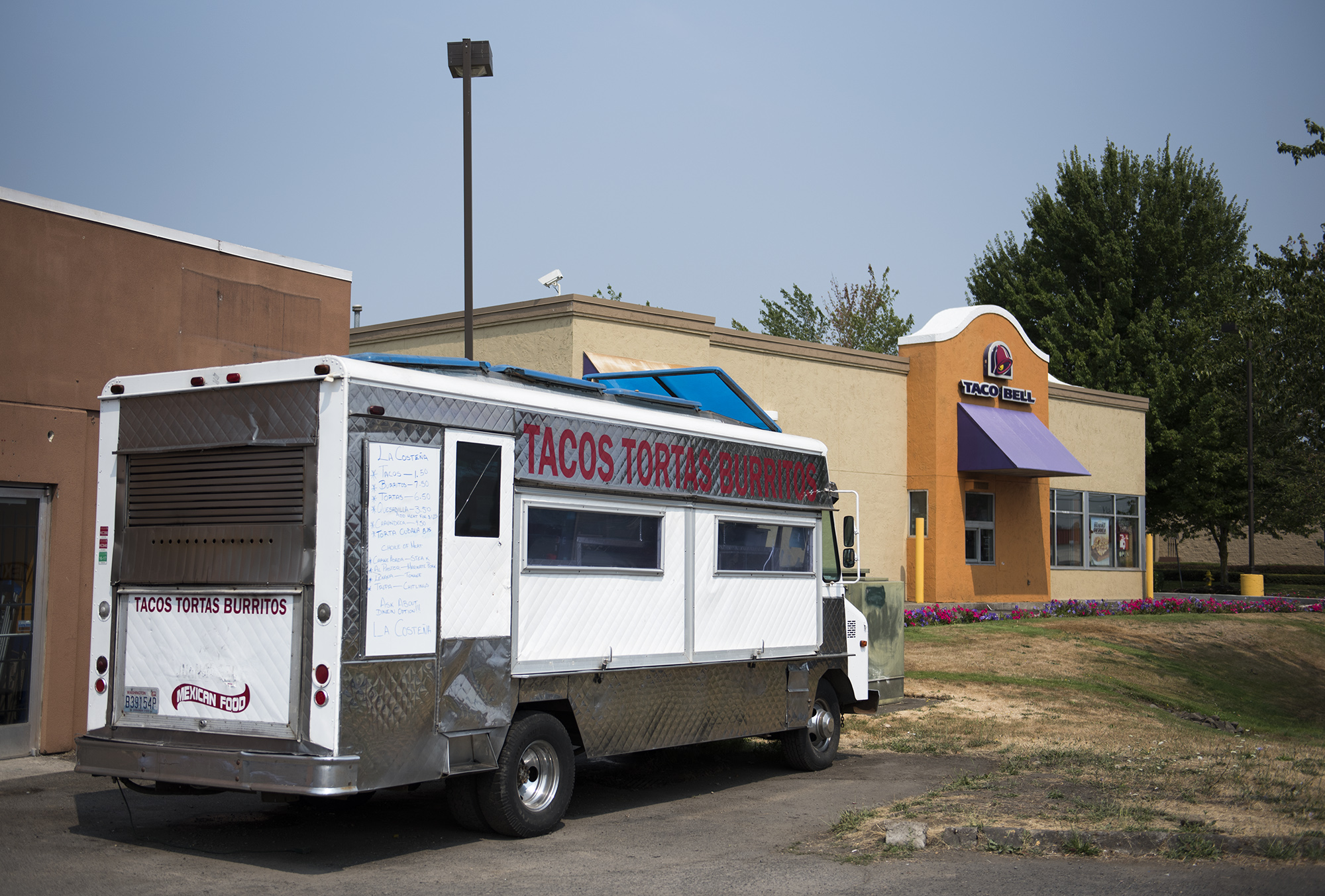
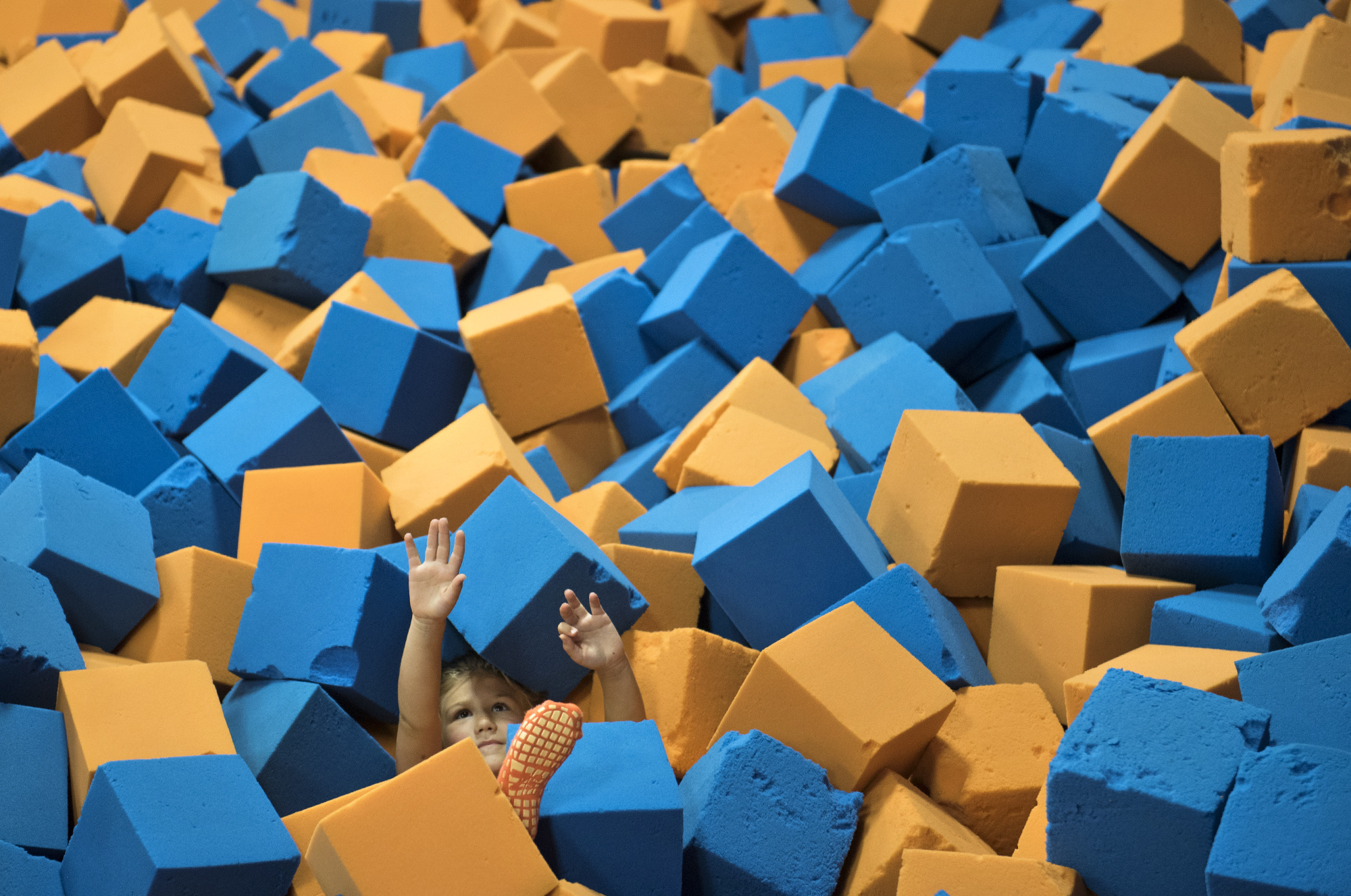
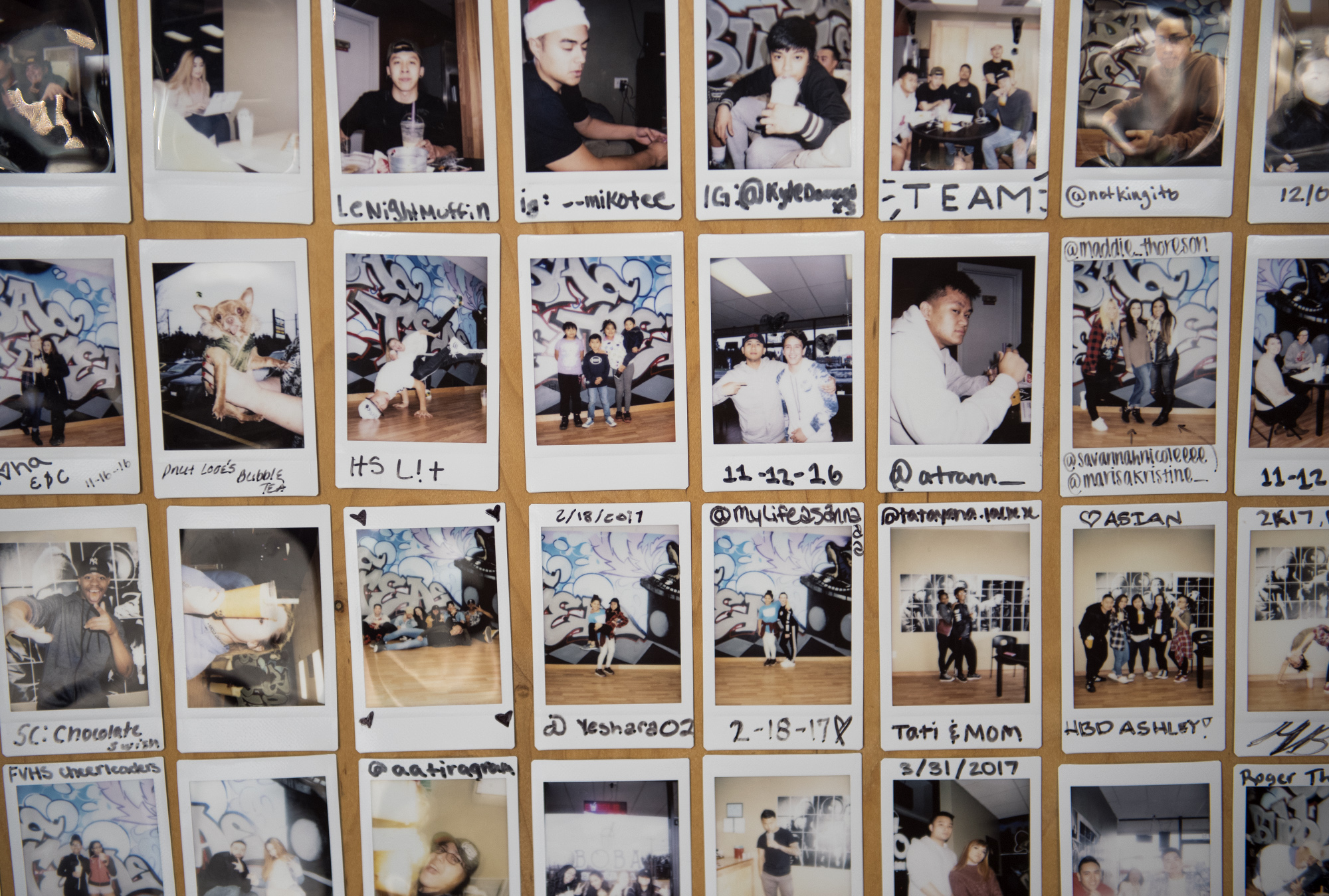
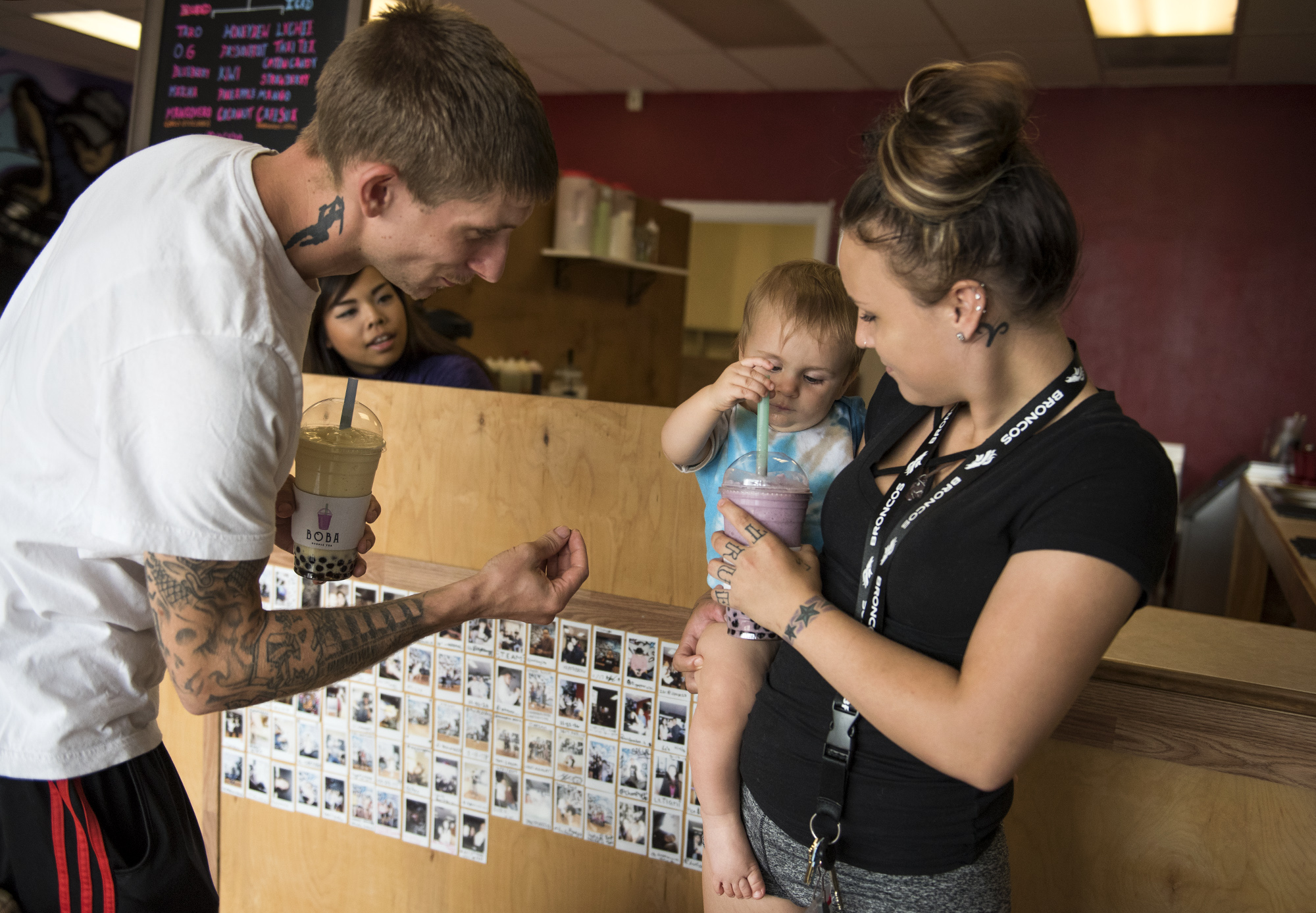
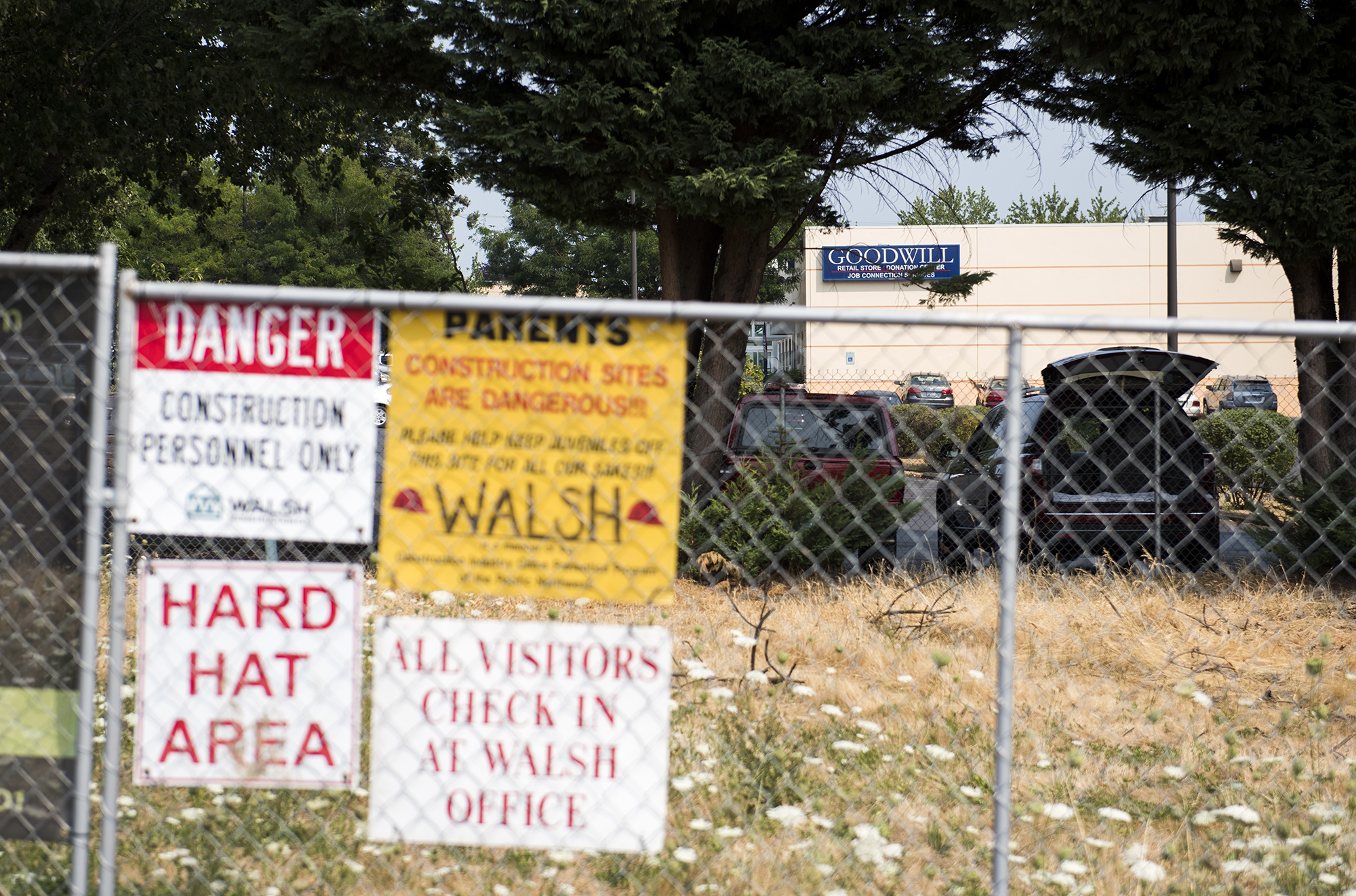
International markets
International Square may be one of busiest spots along Fourth Plain. The U-shaped plaza offers businesses tailored toward all nationalities: a Mexican butcher, a barber, a chiropractor and a European grocer. Some income-based apartments for seniors were built directly behind the plaza and more are in the works. We wander into the Europa Food International Market to ask what its signs say.
They’re Russian and Bosnian words that advertise bread, cheese, milk, fish and candy, says cashier Liuba Anisimova. She says the store carries foods from all over Europe. Originally from Moldova, Anisimova came to the United States seven years ago to join her mother and sister, who had already immigrated. And, she says, she thanks God that she did.
“This is my house. This is my home. I’m very happy,” she says.
Across from the market, work is underway on Meriwether Place, which will be a 30-unit income-based apartment complex. It will be a quick walk to patronize International Square or Goodwill.
Newly planted street trees wilt in the midafternoon heat. Weeds tickle my legs as we walk by Mary Jane’s House of Glass. I glance up as we pass Costa Vida and Black Rock, new additions to the intersection of Fourth Plain and Andresen Road. They look nicer than the rundown gas station and market they replaced. But, there’s another rundown convenience store on the other side of Andresen. New. Rundown. New. Rundown. This place is a patchwork quilt.
There’s no shoulder or bike lane between me and the cars zipping by. When there is a break in traffic, I only hear Alisha’s water bottle sloshing.
“There’s another Wal-Mart,” she says, gesturing toward Vancouver Plaza.
Alisha photographs the construction on the south side of Northeast 78th Street. Two neighboring subsidized apartment complexes are in the works. SeaMar’s old building has already been demolished to make way for 70 apartments along with medical and dental offices. Just south is The Meadows, which will be a 30-unit apartment complex. Another 18 units will be built behind that. People priced out by private market rents may qualify to live in places like these.
We walk a few more blocks dotted with apartments on one side and a park with dead grass on the other. As we near the end of our trek there is a long-standing auto repair shop, a place known for doing good work even if the place doesn’t look too good from the outside. Then, there are townhomes. Monthly rent there starts at $1,450. It would take a full-time minimum-wage worker almost four weeks to earn that much money.
Enlarge

(Alisha Jucevic/The Columbian)
The ride home
At 3:46 p.m. we narrowly miss The Vine back to the start of our walk. The callus forming on the top of my sweaty foot is throbbing. The smell of freshly pressed asphalt lingers in my nose, and a siren wails in the distance as I follow the instructions to buy a single-ride Vine ticket from a machine.
We sit alone on a bench. We’ve walked 5.84 miles in 6½ hours.
Aboard The Vine, I plop into a bright green seat. My feet are beat, but the air conditioning blowing on my ankles is soothing. There are about a dozen people on the giant bus. All’s quiet save for the hiss of brakes releasing or doors opening and closing.
Chris Selk at C-Tran told me Vine ridership is growing, though it’ll take a year to crunch the numbers. The bus rapid transit line has been in operation since January. If done right, transit plays a role in changing economically challenged areas. It’s called Transit Oriented Development.
We pass produce stands and pho restaurants, a boat parked next to a TV repair shop, the deep parking lot in front of Sky Zone, an indoor trampoline park that took the place of an old Albertsons, and workers repainting a Vine bus station in front of Heather Falls Apartments. There were so many places left unturned, undiscovered in our walk along Fourth Plain.
Each place goes by so quickly, reversing all the eastward progress we’ve made as we head back to our cars — but first, a stop at Velonia Boutique & Tailoring. I pull on the yellow cord as we approach Grand Boulevard.
Velonia Boutique is one of three tenants in a building whose landlord took part in the city’s Adaptive Reuse Program, a program that helps property owners fix up their buildings. The windows have been replaced and that’s one reason the spot was attractive to Dina Kroshkin, who we meet when we enter the store at 4:08 p.m. The street-facing windows act as a showroom for Velonia’s European formal wear. On display is a classic lace wedding dress with a train handmade by Dina’s mother, Olga Kroshkin.
Enlarge

(Alisha Jucevic/The Columbian)
Dina Kroshkin recently visited Vienna and Prague to buy products. She’s from Latvia.
“I was 14 when we moved,” said Kroshkin, 33.
Her mother is hemming a skirt. With 38 years of sewing experience, “there isn’t anything she can’t do,” Dina Kroshkin says. It’s August, so she’s deep in wedding season, creating and altering bridal gowns and sewing veils.
The family strategically chose to open shop on Fourth Plain because it’s an upcoming area close to the freeway and there’s nothing like it nearby. In the year the store’s been there, they’ve seen foot traffic increase and more businesses go in around them. The property owner is supposed to keep making improvements. This building, too, has a mural.
I’m about to depart when a familiar face walks in the store. Elena attends my yoga class, but we’ve never talked. She’s a friend of Dina’s, she says.
“This is the dress that mom is fixing for Elena,” Dina Kroshkin says, pulling a navy blue floral dress from a rack.
We talk and laugh at the coincidence. It’s funny how Vancouver is growing and expanding in ways that are difficult to fully conceive, but it’s still a place where you’ll run into someone you know.
When I leave Velonia Boutique at 4:32 p.m., I feel lighter. Maybe I am used to the noise.
Patty Hastings: 360-735-4513; twitter.com/pattyhastings; patty.hastings@columbian.com
